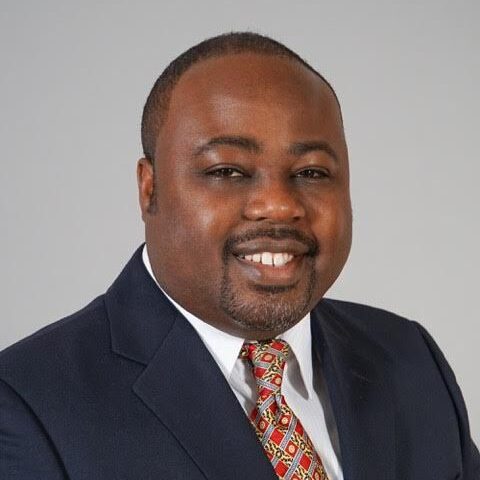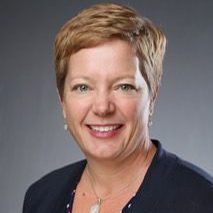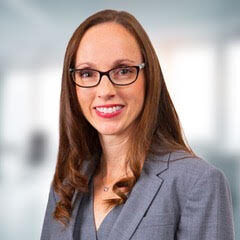 In my recent blog, Could telemedicine be for you? I shared an interview with internist Dr. Adonis Saremi about his experience working fulltime for a telemedicine company.
In my recent blog, Could telemedicine be for you? I shared an interview with internist Dr. Adonis Saremi about his experience working fulltime for a telemedicine company.
For a different perspective, today we’re hearing from family practice physician
Dr. Tom Davis MD FAAFP who helps physicians create their own business doing telemedicine as independent contractors.
Dr. Davis has practiced telemedicine with a wide variety of companies and is eager to share his experience and opinions on the pros and cons of telemedicine
How did you first get involved in doing telemedicine?
Dr. Tom Davis: Seven years ago, I sold my health system and found that working as an employed physician was not a good fit. I quit and started my own business consultancy where I became aware of the expansion of venture capitalists into the telemedicine space. I thought that this might be a good option for the burned-out physicians I worked with to be able to get out from under their miserable working conditions.
As a proof of concept, I created my independent telemedicine practice and found it a more powerful tool than I could ever have imagined. Working a couple of hours morning and evening, I generated the same gross compensation as an average FP. And because I wasn’t tied to an office, I could work out of my RV traveling the country with my family—with plenty of time to reconnect with myself after decades on the treadmill.
What are the typical kinds of cases that you treat in telemedicine?
Dr. Tom Davis: I work with providers of “cross-coverage” telemedicine services to patients within a limited scope. “Cross-coverage” is an archaic term referring to one physician agreeing to be available to another physician’s patients for basic consultations while that first physician was unavailable.
These services market that they provide access to a physician for basic medical problems in exchange either for a fee paid by the patient or an employer.
The supermajority of medical problems I take care of are viral upper respiratory infections, urinary tract infections, and rashes—most of which require either education, reassurance, or triage. I find I only prescribe medication in 1/10 of the encounters.
Flu season is different. I prescribe antivirals much more frequently, but still less than half the time.
Occasionally you get an actual emergency, so you have to have your systems in place to ensure that the patient stays safe while EMS is activated. I’ve managed an acute MI on a tug boat, a placental abruption, and several acute strokes to name a few.
Aren’t you worried about liability caring for these patients you don’t know?
Dr. Tom Davis: Yes.
Even though the acuity of the problems is usually low and the risk of an actionable bad outcome is minimal, if you perform telemedicine at volume it’s only a matter of time until you’re faced with a dangerous situation.
However, as with liability stemming from office encounters, the risk can be mitigated – we discuss several tactics in my online courses. They include the importance of using techniques of persuasion and influence to quickly create a positive atmosphere, methods of rapid history taking that leave the patient feeling they are in charge, and phrasing/documenting informed consent, treatment plans, and medical “off ramps” in an effective, efficient manner.
There are any number of guidelines you can follow when you treat your patient. I use Up-To-Date or whatever guidelines the service provider uses—whichever is the most conservative. They’re not safe harbors, but they can get you comfortable with “virtual treatment.”
The most important thing is to recognize that telemedicine is completely different than treating a patient when they are in your presence. You are dealing with much more limited information and sensory inputs.
What are three great things about Telemedicine for physicians?
Dr. Tom Davis:
-You can practice where and when you want.
-You have virtually no administrative hassles, uncompensated obligations, or office drama.
-Your patients will never, ever, make you ill.
What are three problems or pitfalls physicians should look out for when contracting with a telemedicine company?
Dr. Tom Davis:
– Make certain they are a strong organization and not some “fly-by-night” company, lest they close and not pay you.
– Make certain they offer 1million/3million occurrence coverage as part of the compensation.
– Single illness services, those which promote non-FDA approved products, such as DME ( Durable Medical Equipment)
How can physicians know if telemedicine is a good fit for them?
Dr. Tom Davis: Clinicians who can work independently and are comfortable with uncertainty are the best fit in telemedicine. The more clinical experience you have, the more comfortable you will be at first, but any competent clinician can work telemedicine safely and effectively.
The ability to recognize that virtual healthcare is a discipline completely different from delivering healthcare face-to-face is essential. Once you educate yourself in the guidelines and techniques of a telemedicine encounter you can do fine at any level of experience.
What is the compensation like for physicians doing telemedicine through a contracting company?
Dr. Tom Davis:
$23 and up per encounter for primary care cross coverage for an MD/DO
$10 and up for an Advanced Practice Nurse.
$50 and up for specialty services
What kind of income is possible with telemedicine?
Dr. Tom Davis: If you design your practice correctly $250 an hour for primary care cross-coverage services is quite doable. That’s 10 encounters an hour, five minutes per encounter start to finish. I can usually only keep up that pace for 2-3 hours at a time before I have to break. But when I do work, I usually gross $1000-$1500 per day.
In January 2016 consider an organization that pays its average FP 20k in total compensation for 200 hours of work involving 400 paid encounters. These are real numbers.
In January 2017 as a proof of concept, I worked my carefully constructed telemedicine practice for 200 hours. I performed 1600 encounters @ and average of $25 per for a total compensation of 40k.
Now I would never recommend anyone work this hard, I just did it for one month to prove a point (though I am going to get a published paper out of it). The point is that those docs in January 2016 almost certainly performed 1600 encounters that month, it’s just that only 400 were included in their compensation. A significant portion of those 200 hours they worked included the uncompensated non-clinical and clinical work that their employer required them to perform just so those docs could have the privilege of getting paid for the 400.
Conversely, every one of my 1600 encounters in January 2017 was compensated. I had zero uncompensated time—so my gross income was twice as much.
This advantage of working as an independent contractor is why I can travel around the country in my RV with my beautiful wife and cover my costs by performing encounters for a couple of hours early and late. I work in an “office” with the greatest views on the planet—Glacier National Park, Denali, The Keys, The Smokies.—-and have I the rest of the time to hike, bike, swim, sun, tour, and reconnect with myself in ways that I never could working 200 hours a month in an office.
How involved is it for a physician to start their own independent telemedicine practice
Dr. Tom Davis: To do it right you should budget $3500 for legal fees, $500 for accounting fees and about 24 hours of total time. You can do it for less, but you’ll be practicing with less peace of mind.
I’m on my nineteenth LLC and I’ve made all the mistakes one can make in organizing a business. Using an attorney to construct your own custom LLC is the best path to protecting your interests so you can move forward without anxiety or looking over your shoulder. If you don’t have an attorney, use mine of thirty years at this link. I don’t get a commission for any referrals; he just does a great job at cost-effective rates.
What if a physician just wants to try out telemedicine with one company to see if they even like it? Do they have to spend all this money?
Dr. Tom Davis: Experience teaches that just jumping in to get a taste almost always results in an unsatisfactory experience. The power of telemedicine lies in the efficiency with which it can unlock the value of a clinician’s skills.
Taking an occasional encounter for $25 will expose an inexperienced clinician to all the downsides—the liability, the unpredictable schedule, the “poor” compensation—with none of the upside. Almost all will find that their interest quickly diminishes and they just quit.
Create your own telemedicine practice as an independent contractor and the worst-case scenario is that you don’t like it and you’ll be left with an LLC that you can use to deliver services when you find something that you prefer.
Can you describe the telemedicine programs you offer physicians?
Dr. Tom Davis: I offer a free introductory consultation about the concept of practicing telemedicine as an independent contractor which can be followed by a full-fledged collaboration.
What is the hardest part about getting started doing Telemedicine?
Dr. Tom Davis: Getting over the skepticism that performing an encounter for $25 generates any value for the patient or myself.
Turns out that since so many family docs and internists are simply quitting, patient access to care is an enormous problem. Even though I don’t usually prescribe them a med and I really don’t generate much actual value, the folks I care for on telemedicine are among the most grateful I have ever encountered—and that includes many of the patients who I cared for over 20 years.
Are there some situations where you recommend a physician be an employee of a telemedicine company instead of an independent contractor?
Dr. Tom Davis: None at all. Let me explain.
As an independent contractor, I’m credentialled with 18 telemedicine services and regularly work for 4. If I start having problems with one—they don’t pay me or I don’t get the support I need, I drop them and start working with another.
It’s important to understand that these services are primarily marketing tools, allowing employers and insurers to advertise “you can speak to a doctor,” even when such an encounter really won’t generate much value to the patient.
These services are funded by venture capital and often undercapitalized zombies generating no ongoing profits. Their business plan is to grab as much market share as they can and when the marketplace consolidates, sell themselves for a capital gain. It’s the same model used by the tech industry, health systems, and content producers.
Because of this, these companies can be very unstable and if yours goes under, you could find yourself unpaid for a whole month’s worth of labor.
Instead of cross-coverage services, some telemedicine services provide virtual full-service primary care/medical home-type services and there are docs who are attracted to those. If you are one keep in mind that, just because you’re delivering your care “by wire” doesn’t mean the economics of healthcare delivery has changed. Primary care is still under-compensated relative to the value it generates and whoever is employing you is taking a piece of the revenue your labor generates just like the health system you used to work for.
At first, you might find the demands of one of these “telemedicine homes” lighter and the compensation ample, but that’s only because the costs of employing you is being subsidized in some way—usually by tapping the initial capital investment. Once the investors weary of their burn rate, they will turn the spigot off and start shopping their service for purchase by another set of investors.
In the meantime, you may find that the demands for productivity and revenue generation are suddenly changed to a level not much different than you found working in an office. You will have merely changed from running on a treadmill at the office to running on one at home. What’s worse, you’ve probably signed away your options with an internet-wide telemedicine non-compete in your contract.
I’ve seen this time and time again. Be very suspicious of telemedicine companies offering market or higher compensation for doing essentially what you were doing in the office. It might look good for a time, but it’s not real and will change on a dime. That’s the last thing a physician on the edge of burnout needs.
Staying independent and constructing your practice to suit your own goals rather than some faceless money man keeps you flexible, free, and very, very happy.
See you on the road.
A big thank you to Dr. Tom Davis for sharing his perspective and experience. If anyone is interested in reaching Dr. Davis, you can contact him at Tom@TomDavisConsulting.com.
Wishing all of you a great start to the New Year!
Be back soon,
Heather
Latest Posts
Find what you're looking for:
Popular Categories:
Career Change | Career Enhancement | Job Search | Personal Development
2 Comments
Leave a Comment























Hyperlink for the “forum” above goes to a broken link saying “site is not available”
Otherwise, a frank and valuable interview. Thanks to you both! Already signed up for the consultation!
Steven, thanks so much for reading and your supportive comments. You are most welcome. I appreciate your letting me know about the broken link. I’ll address this with Tom. Thank you!